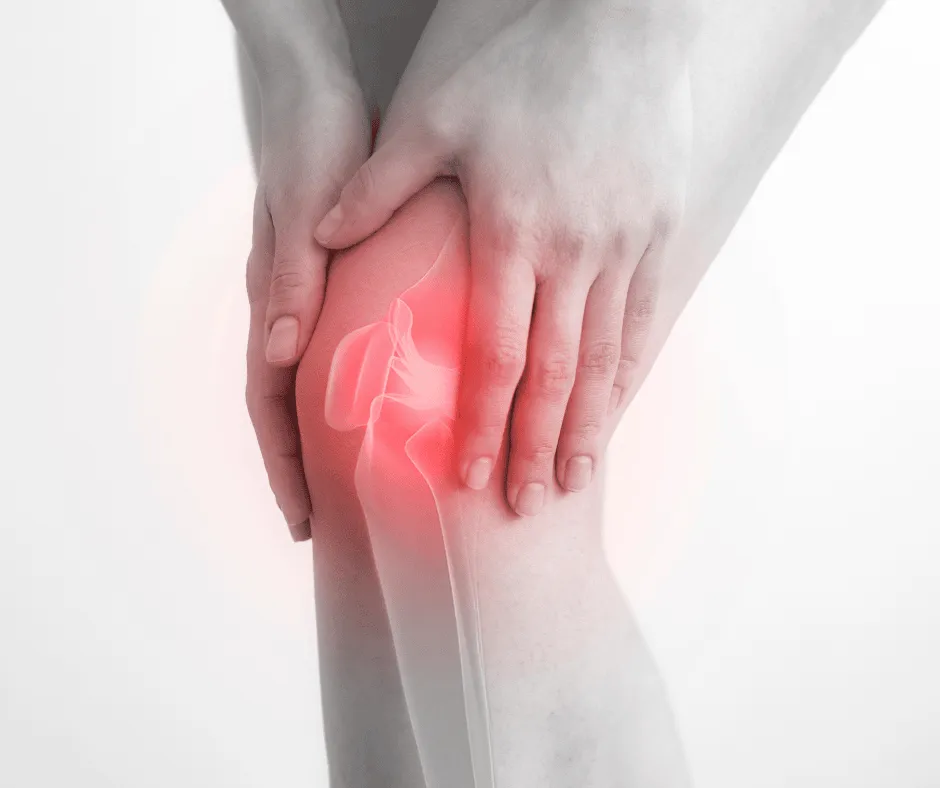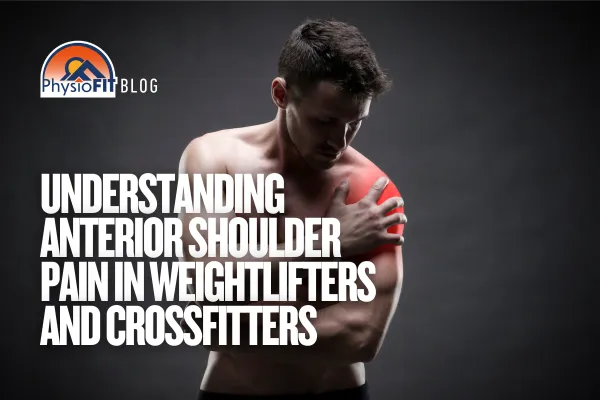Knee Pain Relief
Your Pathway to Knee Pain Relief
In the journey of life, knee pain can often emerge as an unwelcome companion, causing discomfort to people of various ages. From young athletes to active seniors, knee pain is a widespread issue that doesn't discriminate. It may be born out of a sudden injury, like a torn ligament or ruptured cartilage, or it could be the byproduct of a medical condition such as arthritis, gout, or even an infection.
Thankfully, minor knee pain often responds positively to strategies such as physical therapy, using knee braces, maintaining a healthy lifestyle, and can often provide significant relief. Here at PhysioFit, we understand that your journey to pain-free living is unique. We're here to provide customized, evidence-based treatments with a fitness-based approach to alleviate your knee pain effectively, helping you return to your everyday activities.
What You Should Know
Aging, injury, or recurring stress on the knee are the leading causes of knee pain.
Prevalent knee issues encompass sprains or strains in ligaments, cartilage tears, tendonitis, and arthritis.
A proper diagnosis of a knee problem involves a thorough evaluation from a professional or a medical examination, supplemented by diagnostic procedures such as MRIs, CT scans, X-rays, or arthroscopy.
Depending on the type and severity of the condition, both non-operative and surgical treatments are available to alleviate knee pain and problems.

4 of the Most Common Knee Problems
The knee, a complex and integral joint in the human body, can be prone to several issues. These complications often result from natural aging, consistent stress on the knee joint, or an injury. Let's discuss four of the most common knee problems:
Strained or Sprained Knee Ligaments and Muscles: Often the result of a sudden blow or twist to the knee, strains or sprains affect the ligaments and muscles in your knee. The typical symptoms include pain, swelling, and difficulty in walking.
Torn Cartilage: Our knees consist of menisci, which are pads of connective tissue acting as shock absorbers while providing stability. These can tear due to knee trauma, often coinciding with sprains. The usual treatment ranges from wearing a supportive brace to undergoing surgery, depending on the severity of the tear.
Tendonitis: This refers to the inflammation of tendons from overuse during activities like running, jumping, or cycling. An example is patellar tendonitis, also known as "jumper's knee." It's common among sports enthusiasts who partake in high-impact activities like basketball, where the repeated force of landing can strain the tendon.
Arthritis: Osteoarthritis, the most common type affecting the knee, is a degenerative condition where the joint cartilage wears away gradually, often affecting middle-aged and older individuals. Excessive stress on the joint, due to repeated injury or being overweight, can cause it. Another form, Rheumatoid arthritis, can cause inflammation and destruction of the knee cartilage, often affecting individuals at a younger age than osteoarthritis does.
Remember, if you resonate with any of the symptoms or conditions mentioned, we highly recommend making an appointment with us for a thorough evaluation and personalized treatment plan.
Preventing Knee Pain
While it might be impossible to completely avoid knee pain, these strategies can aid in averting injuries and slowing down joint wear:
Maintain a Balanced Weight: Keeping your weight in check is one of the most beneficial actions for your knees. Each extra pound exerts additional stress on your joints, heightening the likelihood of injuries and osteoarthritis.
Condition Yourself for Sports: To equip your muscles for the rigors of sports activities, incorporate conditioning exercises into your routine.
Aim for Perfection in Practice: Strive to perfect your technique and movement patterns for any sport or physical activity. Professional coaching can be valuable in this aspect.
Strengthen and Flex: Weak muscles often precipitate knee injuries. Strengthening your quadriceps and hamstrings, which are front and back muscles of your thighs, will help bolster your knee support. Engage in balance and stability training for more effective muscle coordination around your knees.
Remember, tight muscles can also lead to injuries, so flexibility exercises should be a regular part of your workout regime.
Exercise Wisely: If you're dealing with osteoarthritis, chronic knee pain, or frequent injuries, you may need to reconsider your exercise methods. Contemplate shifting to swimming, water aerobics, or other low-impact activities. At times, simply limiting high-impact activities can result in substantial relief.

Common Symptoms of Knee Pain
Inflammation and rigidity
A reddish hue and a warm feeling when touched
Sounds of popping or crunching
A sense of weakness or lack of stability
Difficulty in fully extending the knee
Remember, if you resonate with any of the symptoms or conditions mentioned, we highly recommend making an appointment with us for a thorough evaluation and personalized treatment plan.
Please Note: The information provided on our website is intended for general education and is not a substitute for professional medical advice. Each individual's situation and body is different. Therefore, what may work for one person may not work for another. We care about your well-being and advise you to reach out to us to discuss your specific needs before implementing any advice from our website.
Your Source for All Things Physical Therapy in Bend Oregon
The PhysioBlog

Understanding Anterior Shoulder Pain in Weightlifters and CrossFitters
Anterior shoulder pain is a common complaint among weightlifters and CrossFit athletes, often attributed to a variety of factors. One prevalent issue underlying this pain is weakness in the shoulder external rotators. In fact, many athletes experiencing anterior shoulder discomfort tend to have external rotator strength in the lower 50% when compared to age-related norms. This weakness can lead to improper shoulder mechanics and increased stress on the anterior structures of the shoulder joint, particularly the labrum.
The Role of Shoulder External Rotators
The shoulder external rotators, primarily the infraspinatus and teres minor, play a crucial role in stabilizing the humeral head within the glenoid socket. When these muscles are weak, the humeral head can shift forward, leading to excessive stress on the anterior components of the shoulder. This stress is particularly problematic for the labrum, a cartilage structure that provides stability and cushioning within the shoulder joint.
Biceps Tendonitis: A Common Misdiagnosis
Due to the close proximity of the biceps tendon to the labrum, anterior shoulder pain is often misdiagnosed as biceps tendonitis. The long head of the biceps tendon attaches directly to the superior portion of the labrum, making it a common secondary source of pain. However, in many cases, the labrum itself is the primary pain generator, with biceps tendonitis being a secondary condition arising from underlying labral pathology.
Self-Assessment for Biceps Tendonitis
If you have been diagnosed with biceps tendonitis, there is a simple test you can try to help identify whether your pain is truly coming from the biceps tendon or if the underlying cause may be labral-related. Perform a very heavy bicep curl; if this movement does not exacerbate your pain, it is likely that the biceps tendon is not the primary issue. Instead, the labrum and poor shoulder mechanics may be the root cause of your discomfort.
Addressing the Root Cause
To effectively manage and prevent anterior shoulder pain, addressing the root cause—external rotator weakness—is crucial. Incorporating specific strengthening exercises such as:
• External rotation with resistance bands
• Face pulls to engage the rotator cuff and scapular stabilizers
• Wall walks to emphasize rotator cuff and scap stabilizers
• Isometric holds to improve endurance and stability
Additionally, focusing on better technique during overhead lifts, pressing movements, and Olympic lifts can help reduce strain on the anterior shoulder structures.
Conclusion
Anterior shoulder pain in weightlifters and CrossFit athletes is often linked to inadequate external rotator strength, among other factors, leading to poor joint positioning and stress on the labrum. While biceps tendonitis is frequently diagnosed, it may not always be the true cause of pain. By strengthening the external rotators and optimizing shoulder mechanics, athletes can mitigate pain and improve performance. If you’re dealing with persistent shoulder pain, consider assessing your external rotator strength and seeking guidance from the barbell rehab experts and performance therapists at PhysioFit for a tailored rehabilitation approach.
Copyright PhysioFIT 2025 . All rights reserved


